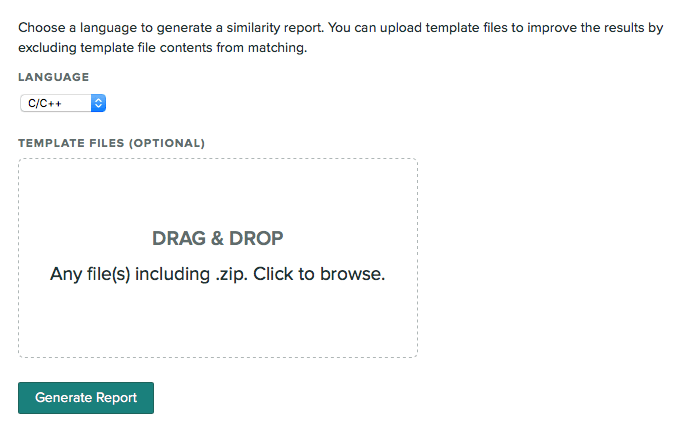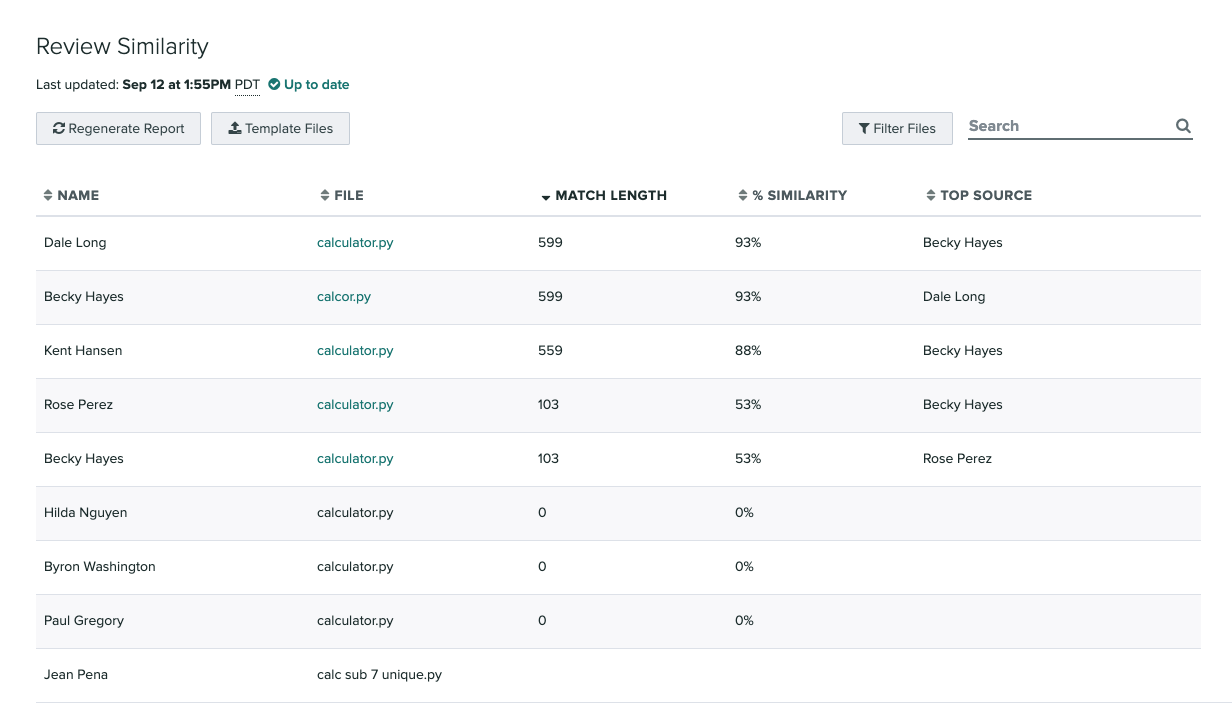Table of Contents
Code Similarity
Generating a Code Similarity report
Code Similarity is a tool to help determine how similar students’ code is to each other. It does not automatically detect plagiarism but rather shows you how similar two programs are to one another within a single assignment. Code Similarity is only available for Programming Assignments and can be used with either an autograder or manual grading. To get started, go to Review Similarity in the left navbar underneath Statistics and above Settings.

On the Review Similarity page, first you’ll be asked to choose which programming language to run the Code Similarity tool in. Then Code Similarity will compare student submissions for that assignment across those file types and ignores the rest. You can also upload starter code (or template files) at this time so that similarity matches will ignore student code that matches those files.

Once the report has been generated, a list of students and their submitted files will be displayed, along with the other student whose submission was most similar to that file.
By default, the results will be sorted by the length of the code that was similar across the pair of submissions. This number is related to the number of tokens in the passages that were similar. A token is a single element of code, e.g. keywords, identifiers, operators, literals, etc.

You can click on a student’s file to be taken to the similarity page where you see a comparison view of the file selected and its most similar matching file from another student in the course.

In the right sidebar, you can jump to different matching blocks of code by using the numbered buttons. You can also see which students had the next most similar files. If you’d like, you can also click the Print Report button to print a document containing the code and all highlighted areas where the two code files are similar.
Compatible programming languages
Though Programming Assignments and Code Autograder can process all programming languages, currently, Gradescope Code Similarity can only review the following languages for similarity:
C, C++, C#, F#, Go, Java, JavaScript, Matlab, MIPS, ML, Python, and R.
